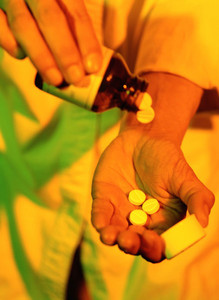Law firm Fish and Richardson have provided answers to five key questions for biosimilar makers when it comes to the patent dance.
The Biologics Price Competition and Innovation Act of 2009 (BPCI Act) was enacted in 2010 and provides an abbreviated pathway for the approval of biosimilars. One of the BPCI Act’s key features is a patent dispute resolution process known as the ‘patent dance’. The patent dance was designed to balance the needs of biosimilar and originator companies in a dispute. It begins with the disclosure of the biosimilar application, as well as the process of manufacture by the biosimilar applicant [1]. However, although the BPCI Act provides the general framework for the patent dance many questions remained open for interpretation. Five questions that have arisen due to this patent dance are discussed below.
1. Must a biosimilar applicant engage in the patent dance?
NO.
Basis:
Amgen vs Sandoz 137 S. Ct. 1664 (2017); the US Supreme Court ruled in 2017 that the so-called ‘patent dance’ was optional [1].
2. Can a biosimilar applicant bring a declaratory judgment action to clear patent rights before the FDA accepts its BLA or mid-way through the patent dance?
Likely NO.
Basis:
Sandoz vs Amgen, 773 F.3d 1274 (Fed. Cir. 2014); Sandoz unsuccessfully filed an action seeking a declaration of invalidity, unenforceability, or non-infringement of patents covering Amgen’s Enbrel (etanercept) biological on the same day it began a phase III trial of its etanercept biosimilar.
Celltrion vs Kennedy Trust; Celltrion similarly saw its declaratory judgment action dismissed when it tried to invalidate patents covering Remicade (infliximab) before it filed a BLA for its biosimilar.
Sandoz vs Amgen, 137 S. Ct. at 1672; Sandoz argued unsuccessfully that the notice of commercial marketing opens the door for filing a declaratory judgment action before the patent dance is complete.
Amgen vs Genentech, No. CV 17-7349-GW(AGRX), 2018 WL 910198 (C.D. Cal. Jan. 11, 2018); The Central District of California court concluded that allowing Amgen ‘to side-step the BPCI Act’s exchange and negotiation requirements and bring suit on any patent simply by filing its notice of commercial marketing would effectively vitiate the BPCI Act’s provisions.’
Celltrion vs Genentech, No. 18-CV-00274-JSW, 2018 WL 2448254 (N.D. Cal. May 9, 2018); The Northern District of California, similarly dismissed Celltrion’s declaratory judgment suits concerning patents covering Genentech’s Herceptin (trastuzumab) and Rituxan (rituximab).
3. What are the ramifications if a biosimilar applicant skips parts of the patent dance?
There are several ramifications:
-
Immediate declaratory judgment action by the reference product sponsor.
Basis: BPCI Act Under 42 U.S.C. § 262(l)(9)(C)
-
The 30-day clock will not be triggered for bringing the first phase of BPCI Act litigation and the limitations on damages that follow if suit is filed later than 30 days.
Basis: BPCI Act 42 U.S.C. § 262(l)(6)(A); 35 U.S.C. § 271(e)(6)(B) and Janssen vs Celltrion, 239 F. Supp. 3d 328, 332 (D. Mass. 2017); The District of Massachusetts held that the 30-day clock was not triggered where biosimilar applicant Celltrion had skipped the negotiation steps of the patent dance
-
Biosimilar applicant may be barred from bringing a declaratory judgment suit in the second phase of litigation following notice of commercial marketing.
Basis: Celltrion, 2018 WL 2448254, at *8; Amgen, 2018 WL 910198, at *2.
- A court may consider the biosimilar applicant’s lack of good-faith participation in the patent dance as part of its analysis in determining injunctive relief. Basis: Sandoz vs Amgen; e.g. whether to grant a preliminary injunction under 35 U.S.C. § 271(e)(4)(B) or § 283 against marketing the biosimilar. 137 S. Ct. at 1675 n.2.
4. Are the factual statements that a biosimilar applicant makes during the patent dance always dispositive for assessing infringement later in litigation?
NO.
Basis:
Amgen vs Apotex, 712 F. App’x 985 (Fed. Cir. 2017); The court allowed a biosimilar applicant to revise factual statements that it made during the patent dance [2].
5. Is a biosimilar applicant limited by the invalidity and unenforceability contentions it discloses during the patent dance later in litigation?
NO, although limited case law to date on this issue.
Basis:
Genentech vs Amgen, No. CV 17-1407-CFC, 2020 WL 636439 (D. Del. Feb. 11, 2020); The US Supreme Court concluded that a biosimilar applicant is not limited by its patent dance contention theories [3].
Despite these conclusions by the law firm, it seems that many issue surrounding the patent dance are far from clear or conclusive and as the biosimilar patent dance evolves process patents, citizen’s petitions, the safe harbor ruling, and many other issues may also play a larger role, which can only result in more litigation and further questions for the US courts.
Related articles
Biosimilars and the safe harbor provision
Hospira asks Federal Circuit to reconsider Safe Harbor ruling
Amgen sues Sandoz over etanercept biosimilar
References
1. GaBI Online - Generics and Biosimilars Initiative. How will the timing of BPCI Act 180-day notice affect biosimilars? [www.gabionline.net]. Mol, Belgium: Pro Pharma Communications International; [cited 2020 May 4]. Available from: www.gabionline.net/Policies-Legislation/How-will-the-timing-of-BPCI-Act-180-day-notice-affect-biosimilars
2. GaBI Online - Generics and Biosimilars Initiative. Court rules in favour of Apotex in biosimilars dispute [www.gabionline.net]. Mol, Belgium: Pro Pharma Communications International; [cited 2020 May 4]. Available from: www.gabionline.net/Biosimilars/General/Court-rules-in-favour-of-Apotex-in-biosimilars-dispute
3. GaBI Online - Generics and Biosimilars Initiative. Amgen at the centre of biosimilars disputes [www.gabionline.net]. Mol, Belgium: Pro Pharma Communications International; [cited 2020 May 4]. Available from: www.gabionline.net/Biosimilars/General/Amgen-at-the-centre-of-biosimilars-disputes
Permission granted to reproduce for personal and non-commercial use only. All other reproduction, copy or reprinting of all or part of any ‘Content’ found on this website is strictly prohibited without the prior consent of the publisher. Contact the publisher to obtain permission before redistributing.
Copyright – Unless otherwise stated all contents of this website are © 2020 Pro Pharma Communications International. All Rights Reserved.








 0
0











Post your comment